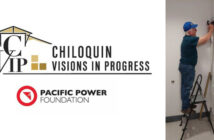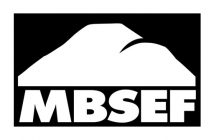If Central Oregon were an island and unconnected to the rest of the world, 2016 would be one humdinger of a year, unparalleled in the history of our region. The energy in today’s business sector is palpable, you can see and feel it at Stackhouse Coffee (the New Economy’s favorite watering hole), Pub Talks, Rotary and Chamber meetings and everywhere where entrepreneurs and business owners hang out.
The problem however, is that, as events in China currently indicate (and as the specter of 2008 constantly reminds us), Central Oregon isn’t an island. Rather, similar to every other region/town/population-center in the U.S. of A., we are a miniscule piece of an increasingly connected, global economy. Or stated another way, as China (or India, or Europe, or yes, even North Korea) goes, so goes Central Oregon. The same logic applies to Austin, Boulder or Pittsburgh, we’re all very small pieces of one very large puzzle; a puzzle that is constantly being muddled by the unpredictable actions of 6.5 billion people, not all of them with our best interests in mind.
Since my crystal ball gets cloudy once I rotate it to where I can see the rest of the world, I have to assume that those 6.5 billion puzzle-muddlers, including those from our very own Wall Street, are going to display some semblance of order and acceptable behavior throughout 2016. So, with that disclaimer in mind…
…2016 in Central Oregon, and especially in Bend, will be 2015 on steroids. This is particularly true of our region’s New Economy businesses, but those from the Traditional Sector -with an emphasis on those that are involved in our tourism industry – won’t be that far behind.
To add definition to the above statement, Central Oregon’s business ecosystem is made up of two sectors, the Traditional sector and the New Economy sector. The Traditional sector includes those businesses that created and developed this outdoor-frenzied region that most of us have come to love. They are those businesses that played a role in attracting the 55,000 people that have relocated to Bend since I arrived in 1994.
Businesses in the Traditional Sector include, for instance, the real estate developers, the car dealers, the retail merchants, the utilities, and those companies that help Central Oregon visitors enjoy the Mt. Bachelors, the Smith Rocks and the Phil’s Trails, to mention but a few.
Meanwhile, our New Economy sector businesses are those folks who sell their products and services outside of Central Oregon; the businesses that EDCO likes to call the “Traded Sector.” Fifteen years ago Central Oregon had but a handful of such businesses (many of them in timber), today we have literally hundreds – maybe as many as 300 throughout our three-county region – if you count the startups. These Traded Sector businesses, for instance, include our four most prominent industry clusters: tech, bio-science, outdoor and microbrewery.
In 2016, Central Oregon’s Traditional Sector businesses will continue to grow, thanks to our ongoing population growth. Kick in the continued trend in tourism that we experienced in 2015 and we should see our Traditional sector businesses – especially those that benefit from tourism -far exceed the growth that is related solely to the region’s increase in population.
But then – drum roll please – add to the mix the growth from our New Economy sector and all bets for simply “better-than-average growth” are off. Bend and Central Oregon boasts a plethora of super-hot, New Economy businesses right now, some that everyone knows (G5, HydroFlask, HummKombucha, RuffWear, Kialoa Paddles, Straw Propeller) and many that most Central Oregonians have never heard of (TechSoft3d, Global Strategies, BasX Solutions, Sudara, Manzama, Paradigm and Trailhead Labs.)
There are perhaps, by my rough estimate, somewhere in the neighborhood of 250 to 300 of these businesses scattered throughout our region (with the heavy concentration in Bend), most of which didn’t exist in the year 2000. Where these businesses will end upon the revenue and job-creation growth curve a year from now is anyone’s guess, but given their entrepreneurial DNA, you can bet that they won’t be standing still.
To give you an example of the growth potential for New Economy businesses, Opportunity Knocks, our region’s peer-advisory board organization, recently started one team of early-stage entrepreneurs who are the owners of hockey stick businesses. Hockey stick businesses are those businesses that are currently enjoying double-or-more revenue increases every year. In addition, OK includes a number of larger businesses sprinkled throughout their 23 teams that are also enjoying similar hockey stick growth: HydroFlask, HummKombucha and Sudara come to mind.
And that’s not all, there’s an interesting phenomenon going on in Bend in the last year or so, a trend that will positively impact our region’s growth. A number of larger businesses have been involved in either successful exits by their owners or capital infusions by outsiders. Ten Barrel, BendBroadband, Bend Research, G5, MediSISS, Structus, Agere and Smartwaivers are some of the more well-known New Economy businesses that fall in this category.
It’s probably too early to know exactly what impact these ownership shifts will have on our economic ecosystem, but if the inflow of infrastructure investments at Ten Barrel and Bend Research is any indication, we’re liable to see a serious increase in new job opportunities on the not-too-distant horizon.
Thus far, it’s reassuring to know that those out-of-town acquirers and/or investors have decided to keep their infrastructure in Central Oregon. Which, when you think about it, is not all that surprising, given the fact that, since businesses are the sum part of their employees, no employee in his or her right mind would agree to leave Central Oregon for Cleveland or Cincinnati.
Here’s another un-intended but positive consequence of our local entrepreneurs exiting their business and/or sharing ownership in it. If Boulder, Colorado is any indication, some of those entrepreneurs will, eschewing a life of golf and afternoon movies, get involved with, and assist, our region’s newly anointed, startup entrepreneurs, further leveraging their impact on our growth opportunities. In Boulder, because their entrepreneurial ecosystem has had a ten year-or-so jump start on ours, those exiting entrepreneurs are today part of an informal yet extremely active underground; an underground that helps emerging entrepreneurs anticipate and survive the dangers that face
all startups.
In addition to our region’s increased traction within the New Economy’s four major clusters mentioned earlier (tech, bio-science, outdoor and micro-brewery), there are also several other industry clusters that are gathering steam. These clusters include a dozen or more foodie businesses, a sector that, for some unknown reason, has come out of the woodwork despite (or perhaps because of?) Central Oregon’s semi-arid landscape.
The UAV cluster is another nascent cluster for which, thanks in part to the Oregon Legislature’s funding of Bend-based Unmanned Aerial Systems Center of Excellence, the, uh, sky is the limit. Pun intended.
Finally, as if the New Economy’s organic growth is not enough, we have the New Economy newbies, i.e. those businesses that have recently relocated to Central Oregon and are in a growth and hiring mode. BasX, Kollective and Red Jacket West are the more prominent examples.
In summation, if the rest of the world cooperates, our Traditional sector businesses should enjoy significantly better than average revenue growth (20 percent and up?) while the New Economy sector will grow at a rate far, far north of that number. How far north, nobody knows including those businesses themselves.
Now, if the City of Bend can only solve its affordable housing and UGB problems…
Jim Schell, working on cool stuff, Jim.Schell5@gmail.com, 541-788-7137





